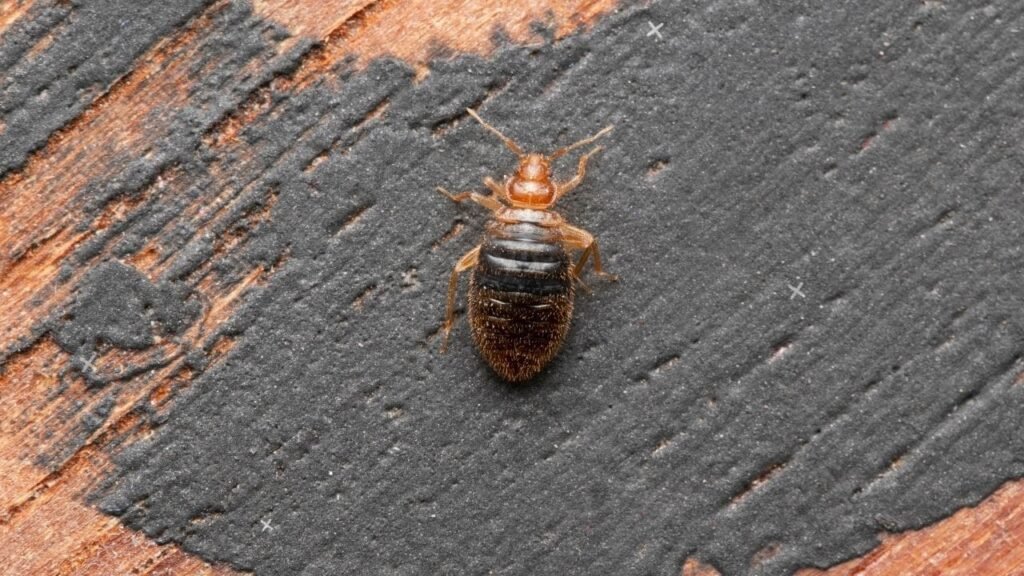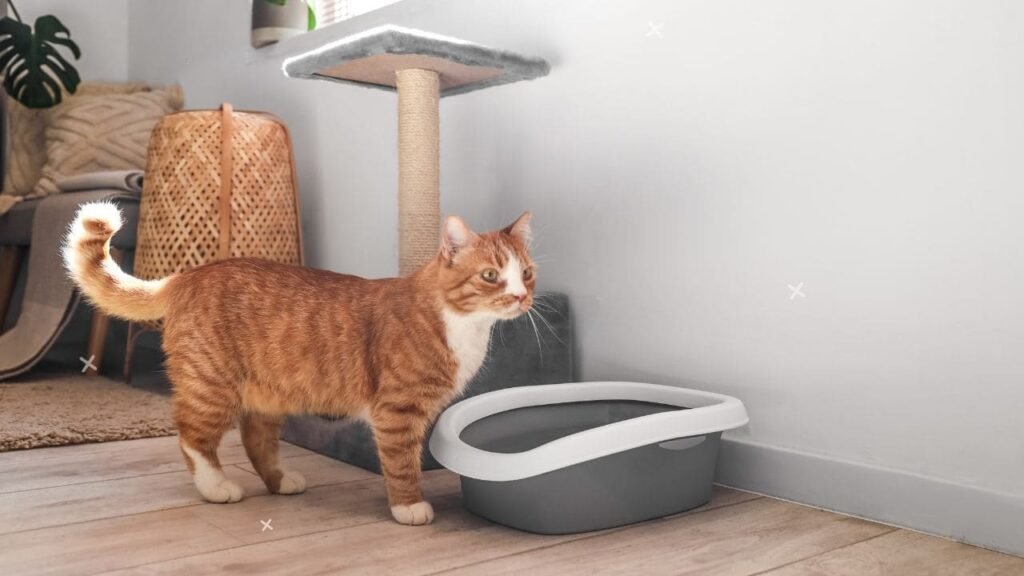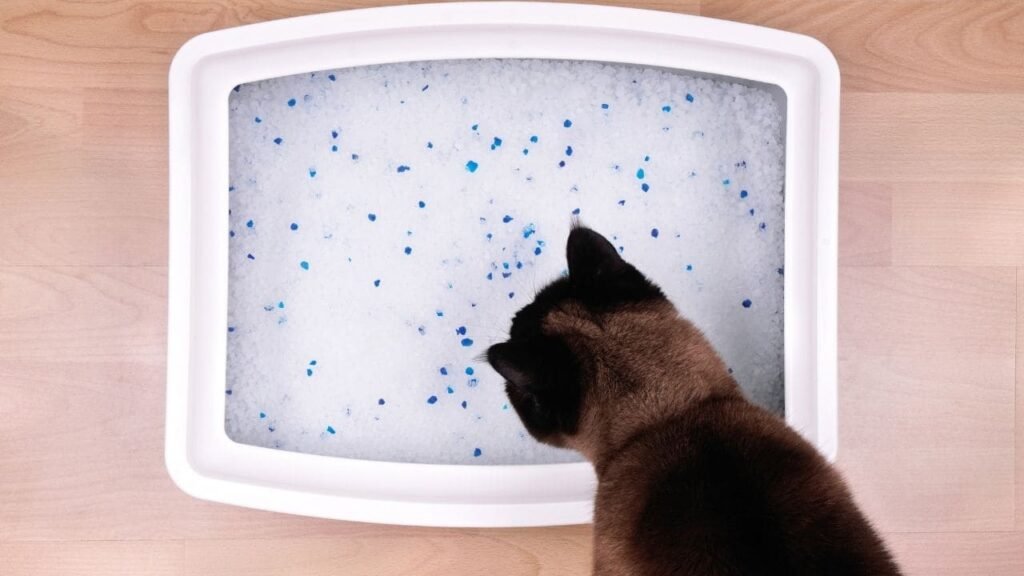


The thought of finding bed bugs crawling around in your cat’s litter box is enough to make any pet owner’s skin crawl. As unpleasant as it sounds, the question remains – Can Bed Bugs Live in Cat Litter and other types of cat litter?
Let’s dive into the details of whether bed bugs can inhabit litter boxes long-term and what you can do to eliminate them.
Bed bugs are sneaky little pests, so it’s understandable to be suspicious of them hiding out in your cat’s litter. However, the truth is that bed bugs cannot actually live, feed, or breed within cat litter for an extended period.
Here’s why:
So while bed bugs won’t take up long-term residence inside cat litter boxes, they can still temporarily crawl inside to hide. Next, let’s look at why they might do this and if they pose any risks.
| Bed Bug Fact | Description |
|---|---|
| Size | 4-5 mm long, about size of apple seed |
| Appearance | Oval, flat, brownish insects. Wingless. |
| Feed on | Human and animal blood |
| Bites | Cause itchy welts on skin |
| Lifespan | 4-12 months |
| Reproduction | Female lays 200-500 eggs in lifetime |
| Preferred Habitats | Cracks near sleeping areas and furniture |

Since bed bugs can’t truly live in cat litter, you may be wondering why you might spot them in there occasionally. Here are some reasons bed bugs could find their way into litter boxes:
While brief visits to cat litter won’t sustain bed bugs long-term, it can still put your cat and home at risk in multiple ways if an infestation exists.
Having bed bugs conceal themselves in your cat’s litter carries some problematic consequences:
Clearly, allowing bed bugs to inhabit cat litter boxes poses problems. So what can you do to get rid of them or stop them from entering in the first place?
| Sign | Description |
|---|---|
| Live bed bugs | Small, flat, brownish bugs crawling in litter |
| Molted skins | Light brown, shed exoskeletons of bed bugs |
| Blood spots | Dark red spots on litter from crushed bed bugs |
| Eggs | Tiny white eggs, about size of a pinhead |
| Musty sweet odor | Scent produced by bed bug infestations |
If you suspect bed bugs have crept into your cat’s litter, taking action is important. Here are some tips to destroy bed bugs and keep them out of the litter box:
With vigilance and the right products, you can kill bed bugs taking shelter in the litter and stop new ones from getting access. But when should you call in the professionals?
| Treatment | Safety Tips |
|---|---|
| Diatomaceous earth | Avoid breathing in dust. Wear a mask when sprinkling. Use food-grade only. |
| Pesticide sprays | Read labels carefully. Open windows and use in well-ventilated area. Keep pets away until dry. |
| Pesticide dusts | Use sparingly. Avoid inhaling powders. Ensure cats don’t ingest while grooming. |
Do-it-yourself bed bug removal from litter boxes may not always do the trick. Consider bringing in professional pest control if:
Licensed exterminators have access to potent insecticides not available to consumers, as well as techniques like fumigation and heat treatments. They can target bed bugs hiding in crevices and fully eliminate infestations.
If you rent your home, your landlord may cover the costs of bed bug removal, so check first before paying for treatment. Make sure to inspect professional treatments afterwards to ensure all bed bugs and eggs have been killed in the litter box.

While the thought of bed bugs sneaking into cat litter is unpleasant, the main point to remember is that they cannot live there permanently. Treating and cleaning litter boxes regularly keeps them free of bed bugs. Always check for signs of infestation so bed bugs don’t multiply and spread via cat litter.
With some diligence, you can protect your feline friend’s litter box from these pesky insects. Stop bed bugs from infiltrating your cat’s toilet area before they become established and difficult to eliminate. Your cat will thank you!
While bed bugs only temporarily take shelter in cat litter, other bugs can breed and thrive in cat litter if conditions allow. Here is more about the most common cat litter box insects and how to tackle them:
Tiny fruit flies are attracted to moist, organic litter. Their eggs can be laid directly in the litter and the larvae feed on feces and urine.
Prevention: Remove wet clumps promptly. Clean the box frequently with soap and water to destroy eggs.
Fungus gnat larvae thrive in damp litter high in organic matter. Adults lay eggs in litter and the larvae feed on feces, fungi and decaying litter.
Prevention: Use low-tracking litter and completely change out litter 2-3 times per week.
Fly maggots hatch from eggs laid directly inside litter boxes. The larvae feed on cat feces before transforming into adult flies.
Prevention: Remove all feces at least daily. Use litter deodorizers. Wash the box weekly.
Tapeworm segments can detach and land in litter after being passed from infected cats. The segments contain eggs that become infectious to cats if accidentally ingested.
Prevention: Treat cats for tapeworms. Change litter frequently to remove segments.
These beetles infest litter with high organic contents. Larvae hatch from eggs laid in litter and feed on fecal matter, while adults eat litter and breed.
Prevention: Use low-tracking litter. Disinfect box weekly. Replace litter often.
Silverfish feed on the organic matter, fungi and bacteria that grow in damp, soiled litter. They lay eggs directly in litter.
Prevention: Dry out litter by changing it more frequently. Reduce moisture.

To help avoid infestations of bed bugs, flies, beetles and other pests, here are some proactive litter box hygiene practices to follow:
Staying on top of litter box hygiene helps eliminate breeding grounds for bed bugs and other pests that can turn your cat’s bathroom into an infested area. Stop bugs from colonizing the litter and protect your cat’s health with prompt poop scooping and thorough weekly cleanings. Your furry friend will enjoy a clean, bug-free place to use the litter.
How long can bed bugs live in cat litter?
Bed bugs cannot survive long-term living solely in cat litter, as they require blood meals to live. However, they can temporarily hide and crawl in cat litter for 1-2 weeks typically before needing another blood meal. Their small, flat bodies allow them to fit into cracks and spaces within litter.
Will bed bugs lay eggs in cat litter?
It is possible for a female bed bug to lay some eggs during a temporary visit in cat litter, but this is not an ideal breeding ground. Bed bugs prefer to lay eggs in cracks and crevices near human hosts. The eggs may hatch in cat litter, but the young bed bugs will perish without a blood meal source.
Can bed bugs spread through cat litter?
Bed bugs hiding in cat litter can crawl out and spread to new areas of the home. Their small size and flat shape allows them to cling to shoes, clothing, and pets exiting the litter box area. So infested cat litter can enable bed bugs to migrate and colonize other parts of the home.
How do I know if my cat litter has bed bugs?
Signs of bed bugs include visible moving bugs, small red/brown fecal spots, yellow shed skins, a sweet musty odor, and dark dots from crushed insects. You may also see tiny white eggs laid in cracks of litter box. Look along perimeter edges and under litter liner for evidence.
Should I throw out cat litter with bed bugs?
It is best practice to discard any litter that shows signs of bed bugs, as they can continue to live and lay eggs if you simply pour new litter on top. When changing litter, seal up the discarded litter in a trash bag immediately so bugs don’t escape into the home. Thoroughly clean the empty litter box before refilling.